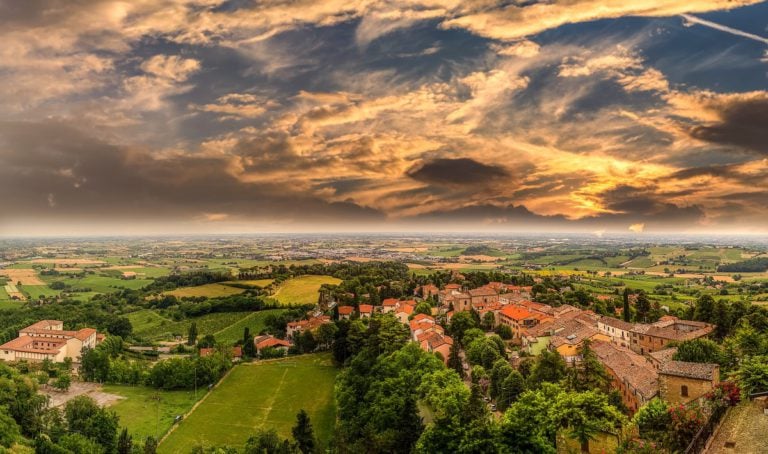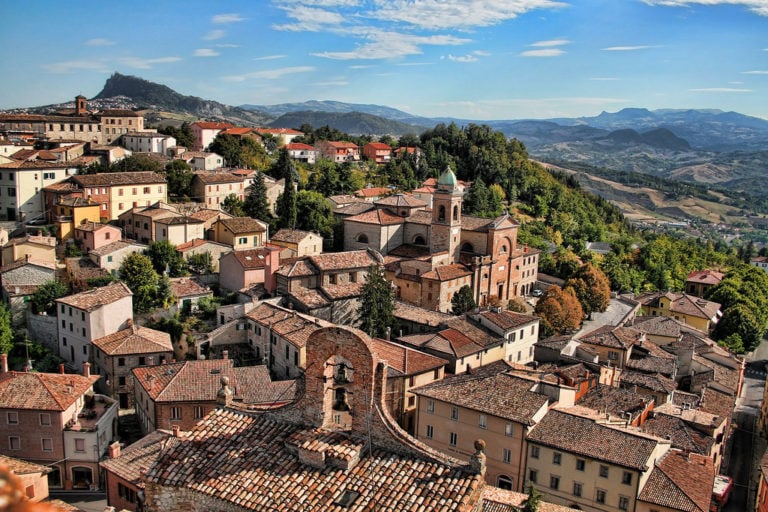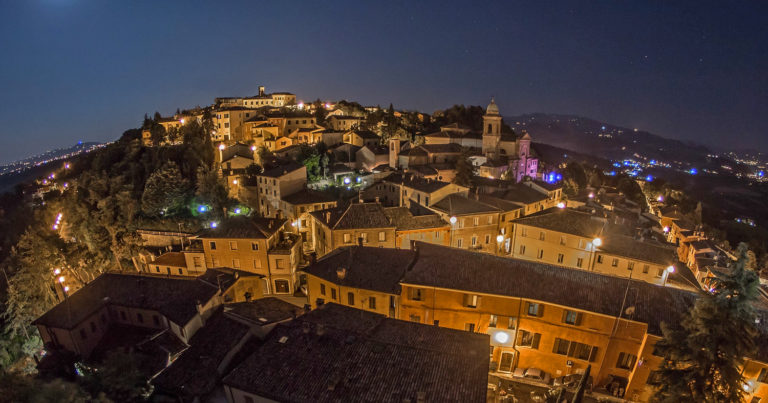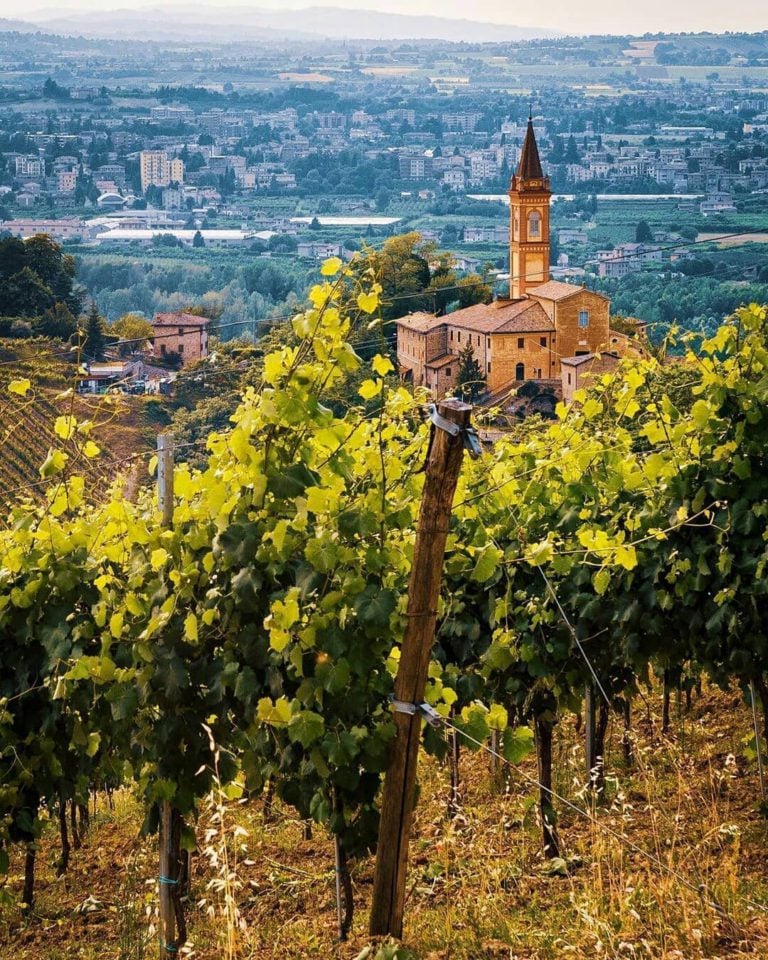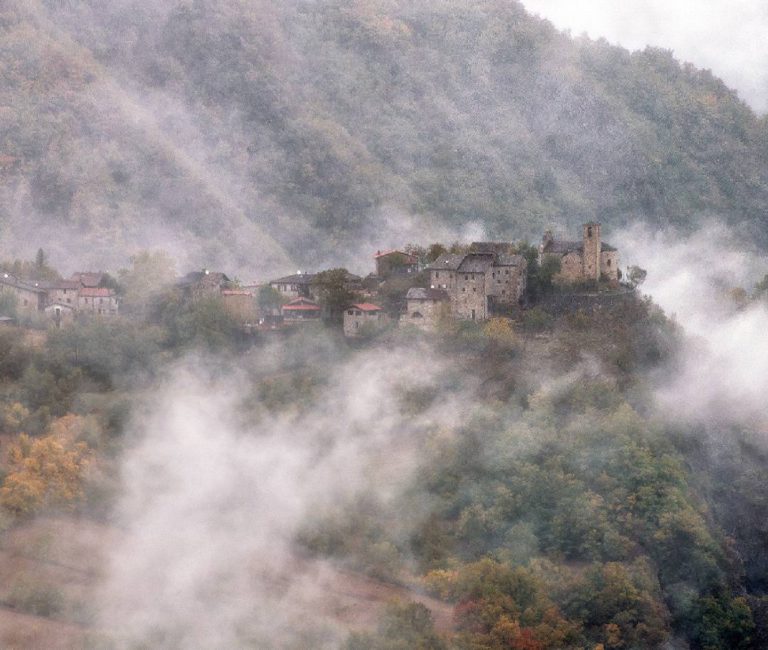A canvas of wonderful natural landscapes and breathtaking views over villages and historical fortresses, the upper Marecchia valley captivates the eye and wins over even the stoniest heart.
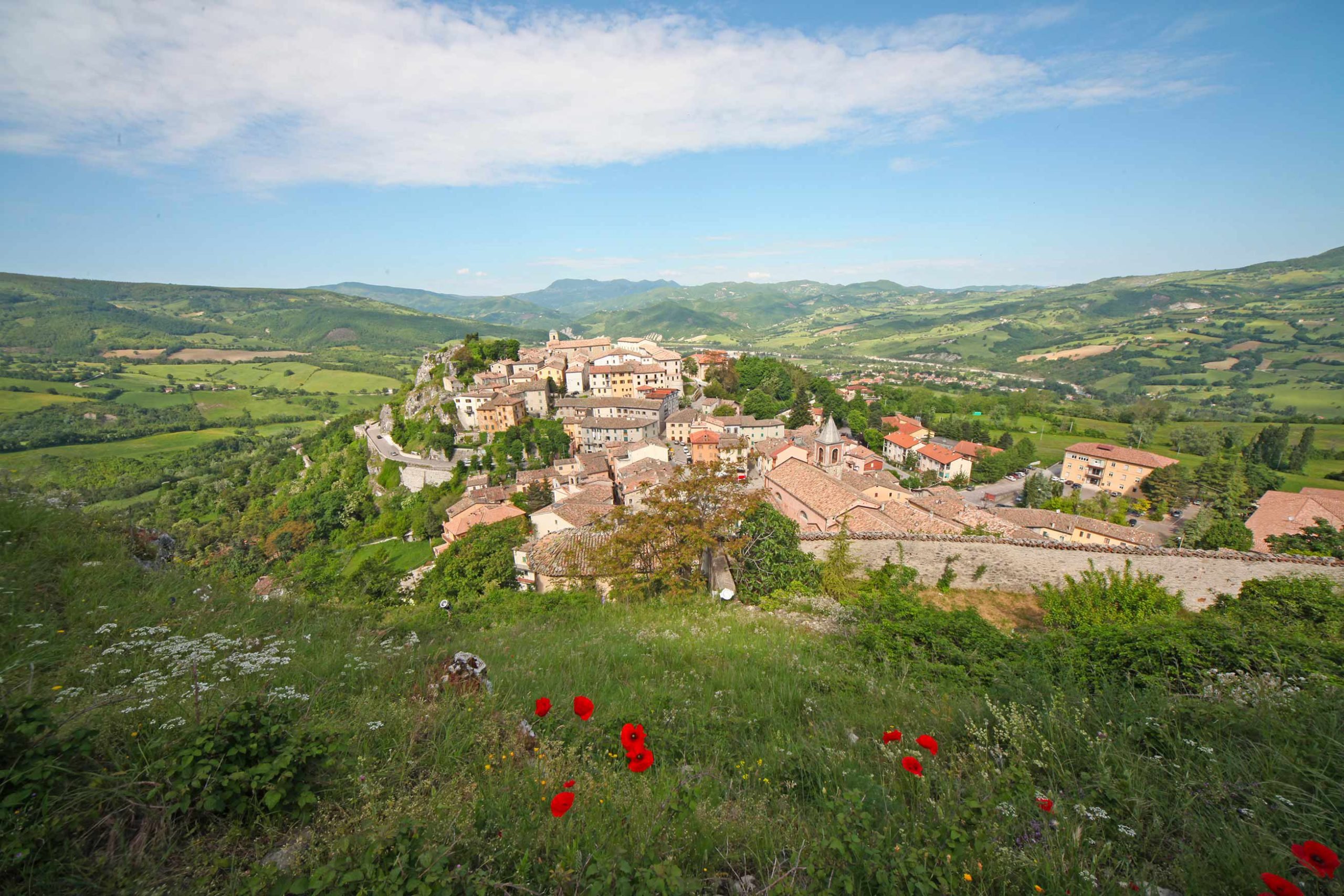
Here, on the border between Romagna and the Marche, 630 meters above sea level at the foot of Mount Carpegna, stands the small town of Pennabilli. It has been on the Italian Touring Club’s Orange Flag list since 2010, a prestigious award for little places of great natural beauty with excellent tourist amenities.
The town is at the center of a majestic natural theatre in Sasso Simone and Simoncello Natural Park and has attracted important historical figures since the days of antiquity. Its appeal has grown in recent years thanks to its comfortable accommodation, great local cuisine, and varied calendar of events for all seasons.
Pennabilli is an unexpected haven of peace and tranquillity, a “place with soul”, according to poet Tonino Guerra, who lived most of his life here. There is also a surprising connection between the Marecchia valley and the culture of Tibet.
History
Like most towns hereabouts, Pennabilli sinks its roots into the ancient past. It was first inhabited by the Umbrians, Etruscans, and Romans, who used the area as a strategic link between the Tyrrhenian and Adriatic coasts.
Around the year 1000, a pervading sense of insecurity prompted the building of several castles; the embryonic settlements of Penna (on Mount Roccione) and Billi (Mount Rupe) grew around two of them. According to 14th-century sources, the epic story of the Malatesta family began here in 1004; in a few years, they would come to dominate the whole of Romagna.
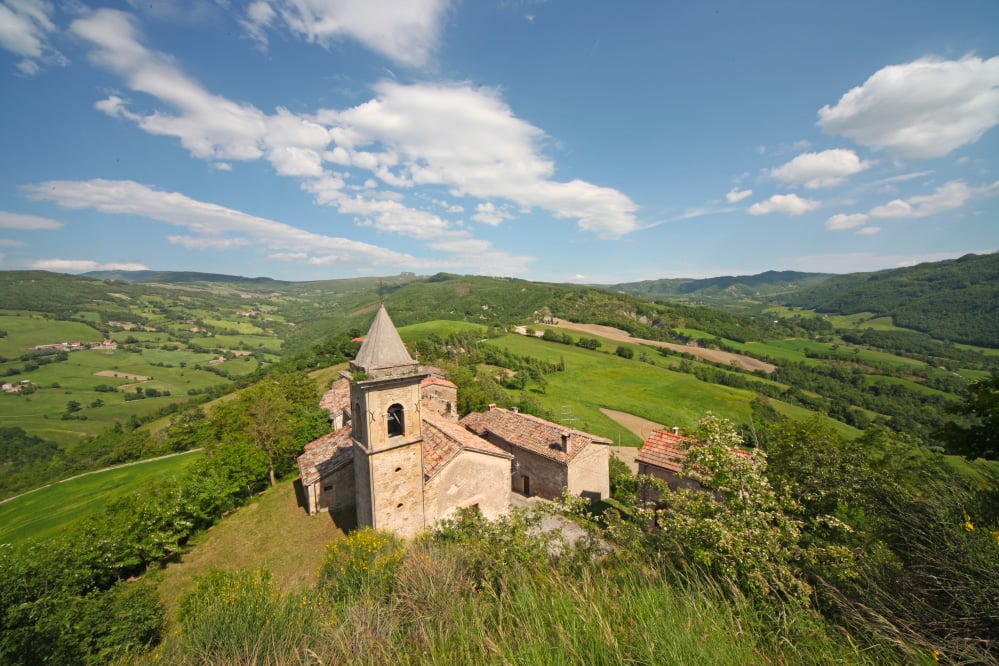
In 1350, the independent communities of Penna and Billi joined forces to rebuild the town with the walls and gates we still see today.
For over two centuries, the Malatesta, Montefeltro, and de Medici families, and ultimately the Papal States, vied for control of the town, until 1572, when Pope Pius V moved the Diocese of Montefeltro from Monte Leo to Pennabilli, where it remains. Pius V later became the town’s patron saint.
What to see
Pennabilli, now a town of 3000 souls, has maintained its historical identity by preserving its medieval origins.
Many old gates and wall sections are still visible today, such as Porta dei Billi, Porta Cinzia, Porta Carboni, and Porta Malatesta, along with various official buildings erected in the 1500s when the diocese moved here.
Pennabilli’s main church, also called San Leone cathedral (16th century) stands in the main square. The church of Sant’Agostino (late 15th century) is also known as the Sanctuary of the Holy Virgin of the Graces after a fresco by the school of Antonio Alberti, which is said to have wept, miraculously, in 1489. The 16th-century monastery of St Anthony of Padua is near the old Billi fortress. Its ruins are the perfect spot to appreciate the view across the Montefeltro area, a scene that Leonardo da Vinci used as the background in the Mona Lisa.
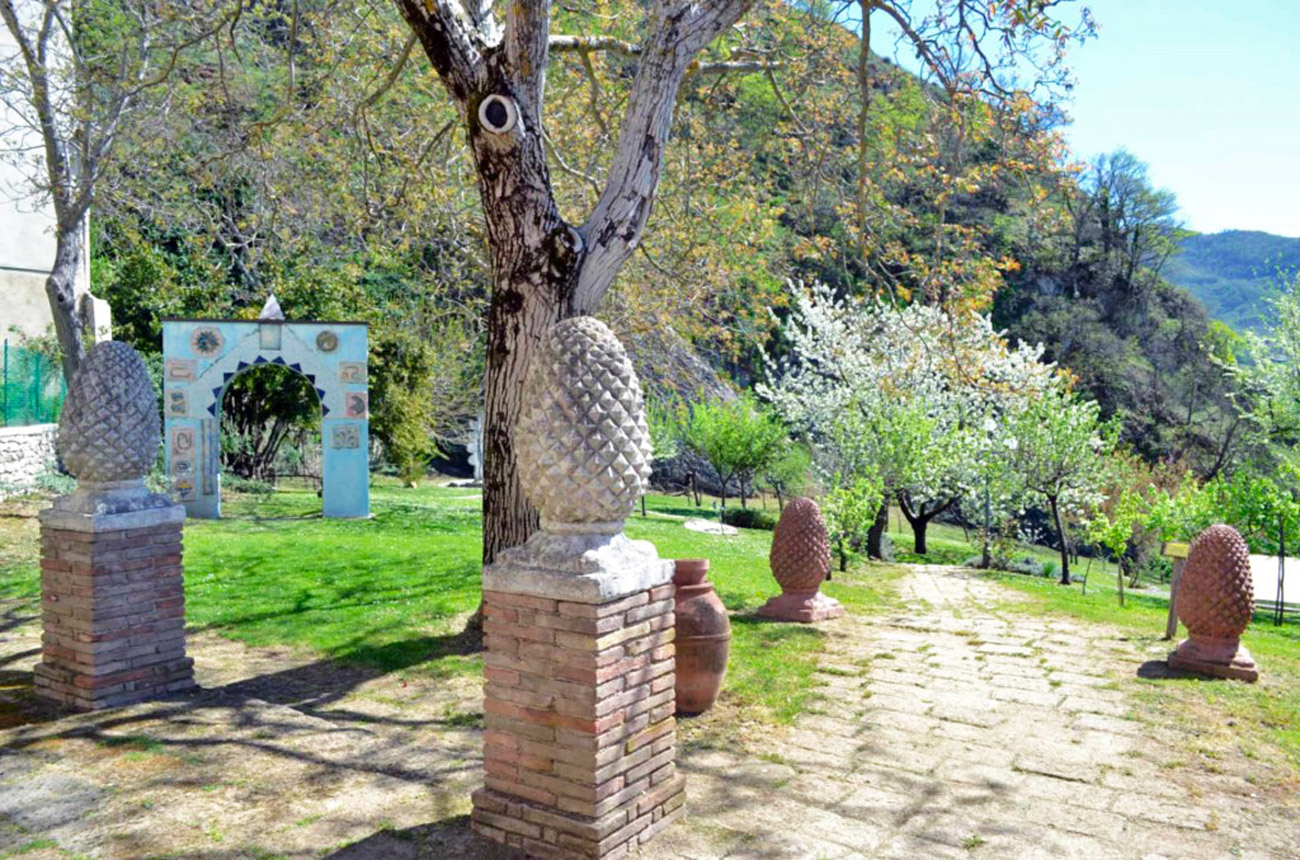
Various civic buildings, like Maciano fortress and tower, are also well worth a mention.
Pennabilli’s heritage museum has a remarkably varied and fascinating collection. The Bishops’ Palace houses the Diocesan Museum, opened by Bishop Antonio Bergamaschi in 1962 with works and exhibits from churches and chapels throughout the Montefeltro area.
The former town hall is now home to Mateureka, Europe’s only museum of mathematics, which tells the story of the key ideas and inventions that have made mathematical history. Finally, the Sasso Simone and Simoncello Natural Park museum has a wealth of information about the wildlife and natural resources in the whole area.
The Luoghi dell’Anima (places of the soul) is a quirky open-air museum conceived by local poet Tonino Guerra as a trail of installations, paintings, and sculptures in seven different locations: The garden of forgotten fruit, in the friary, which is also home to The refuge of the abandoned Madonnas; Sundial street, in the town center; The fossilized garden, at the foot of Bascio tower; The angel with whiskers, in the memorial chapel, The sanctuary of thought, by the walls of the old Penna fortress; and the Madonna of the snowy rectangle, in Ca’ Romano district.
What to do
Spring
– No matter what religion you are (if any), go to the traditional Jewish Procession on Good Friday. With over 70 costumed figures parading through the old streets by candlelight, it makes quite an atmospheric spectacle.
– There is plenty of great walking for nature lovers in Sasso Simone and Simoncello Natural Park.
Summer
–Tap your feet to the tunes of the street buskers;
–Have you ever wondered what it feels like to be part of a painting? Come here and you’ll find out: art historians have recently discovered that the Pennabilli area appears as the background in the Mona Lisa, no less.
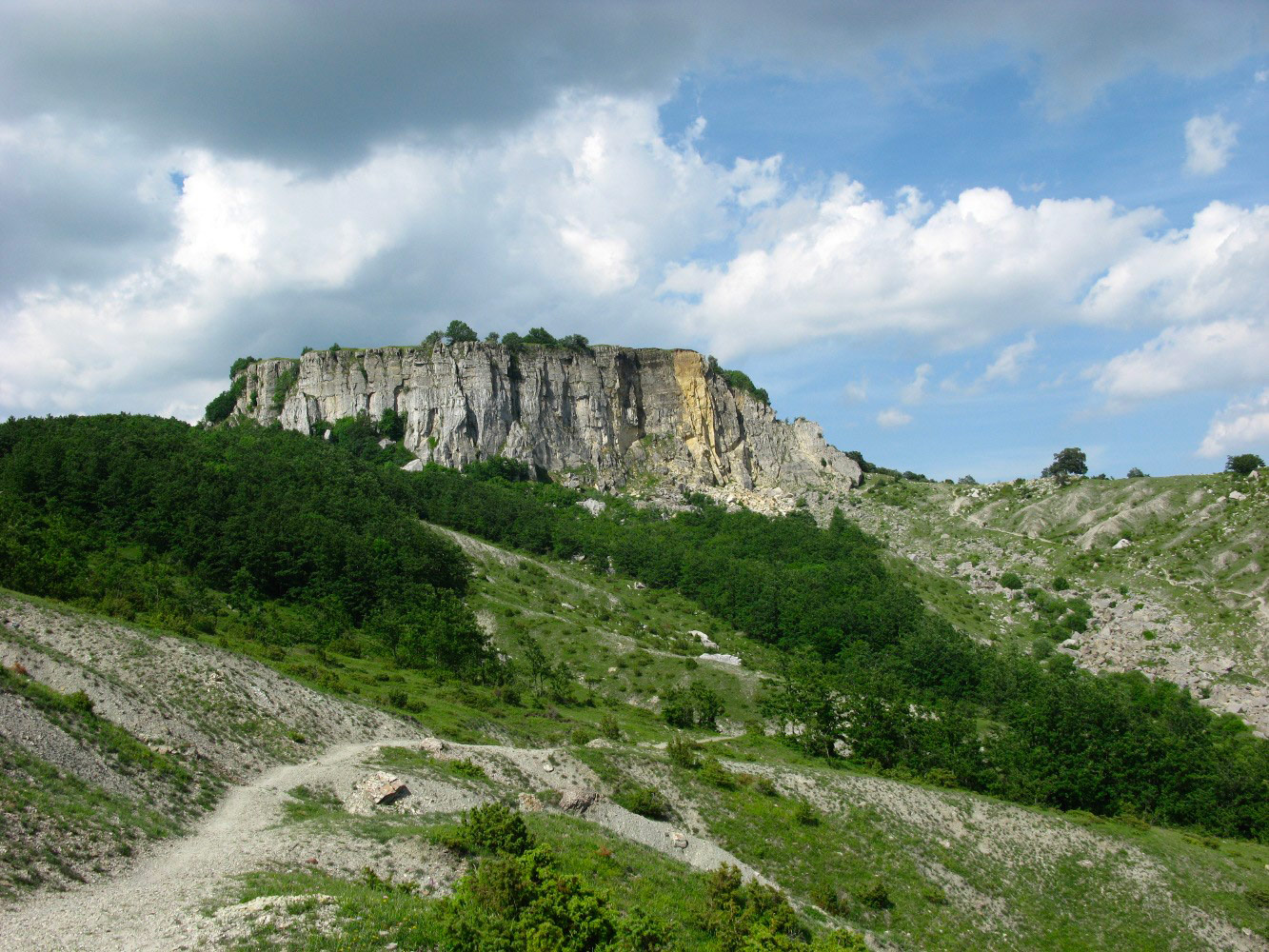
Autumn
– Explore a one-of-a-kind art itinerary – the “places of the soul”, by poet Tonino Guerra – which threads its way up Mount Roccione; it includes the Tibetan bells donated by the Dalai Lama;
– If you love great grub, don’t miss the town food festival.
Winter
– Spend a weekend fishing, hiking, and exploring around Lake Andreuccio;
– An alternative New Year’s Eve, far from the din of the city, with fireworks, a bonfire, music, and kisses under the mistletoe.
Events
Prugnolo mushroom festival – last Sunday of May
A feast of food stalls
Artisti in Piazza – May / early June
the international performing-arts festival has been featuring an array of live performances by artists and companies from all over the world since 1997;
Traditional Antiques Fair – July
One of the longest-running and most popular of its kind in Italy, with a host of fringe events to boot;
Ancient fruits of Italy festival -October
Conceived by poet Tonino Guerra to celebrate and preserve the traditional old varieties of fruit, vegetables, and even livestock.
Food and Wine
Pennabilli and indeed the whole Montefeltro area boasts some really rather tasty food. Sink your teeth into some mushrooms, such as the exquisite prugnolo, the tantalising local truffles, and a panoply of cheeses from Formaggio di Fossa, dubbed “Ambra di Talamello” by Tonino Guerra, to pecorino and soft cheeses like squacquerone and raviggiolo.
Do try the chestnuts and the bitterish local honey from the Alta Valmarecchia. The hillfolk eat a lot of beef, pork, and bread, as well as the omnipresent piadina flatbread.
Pilgrim paths and walking trails
How to get to Pennabilli
Pennabilli is the southernmost town in Emilia-Romagna, on the border with the Marche region, barely 30 miles from the Adriatic coast. It has no trains but is easy to reach by car or bus on the SS258 main road along the River Marecchia.
The [Emilia Romagna Villages] section is dedicated to Villages that are part of the Associations Borghi più belli d’Italia, Bandiere Arancioni del Touring Club & Borghi autentici d’Italia.
Author

Davide Marino
Davide Marino was born archaeologist but ended up doing other things. Rational – but not methodic, slow – but passionate. A young enthusiast with grey hair
You may also like
Five villages reachable by train in Emilia-Romagna
by Giulia Delaini /// April 12, 2018
The most beautiful Italian Villages in Emilia-Romagna
by Elisa Mazzini /// October 26, 2017
The village of Verucchio: from the Etruscans to the Malatesta Family
by Arturo Castellini /// October 12, 2017

Interested in our newsletter?
Every first of the month, an email (in Italian) with selected contents and upcoming events.
